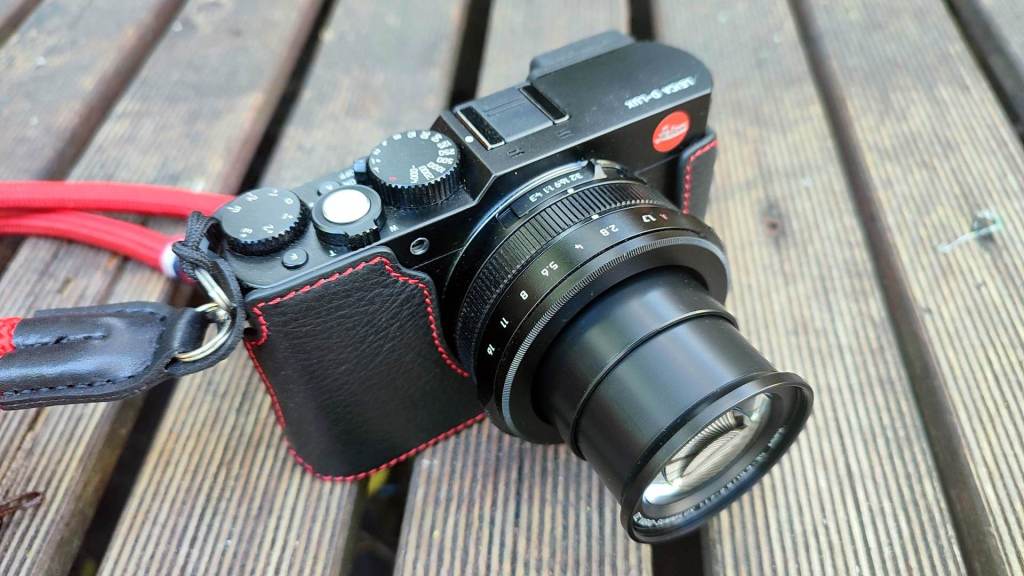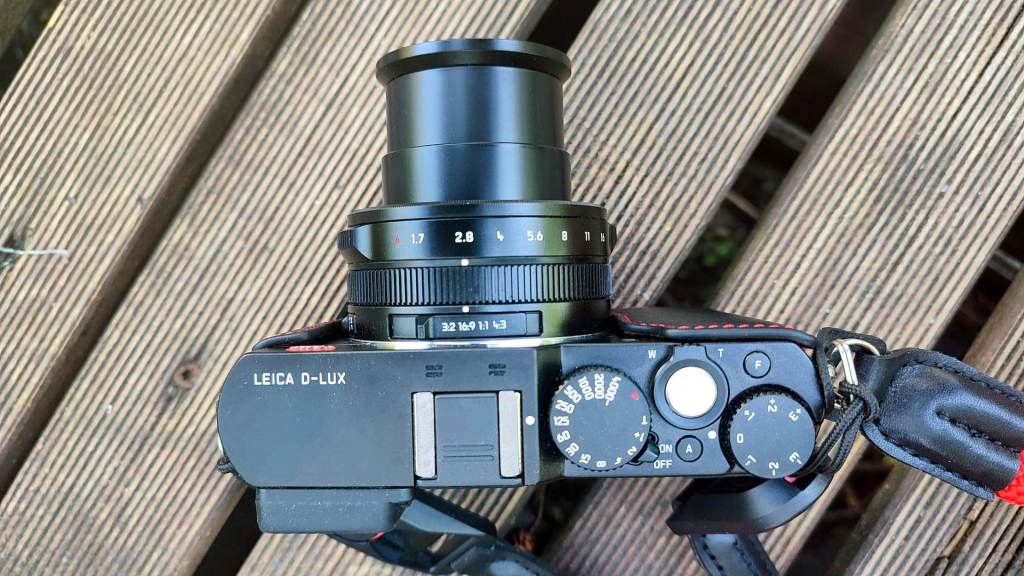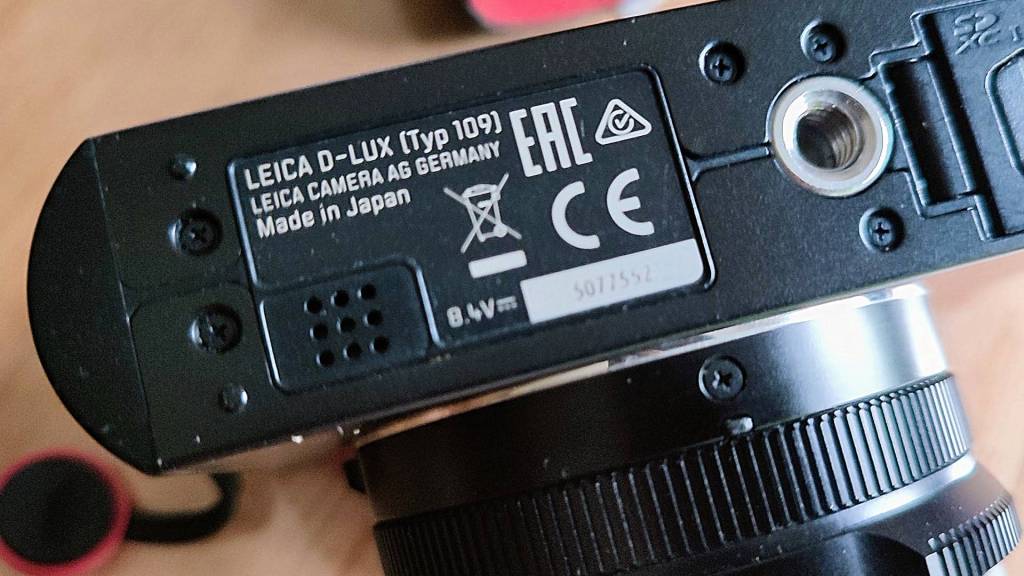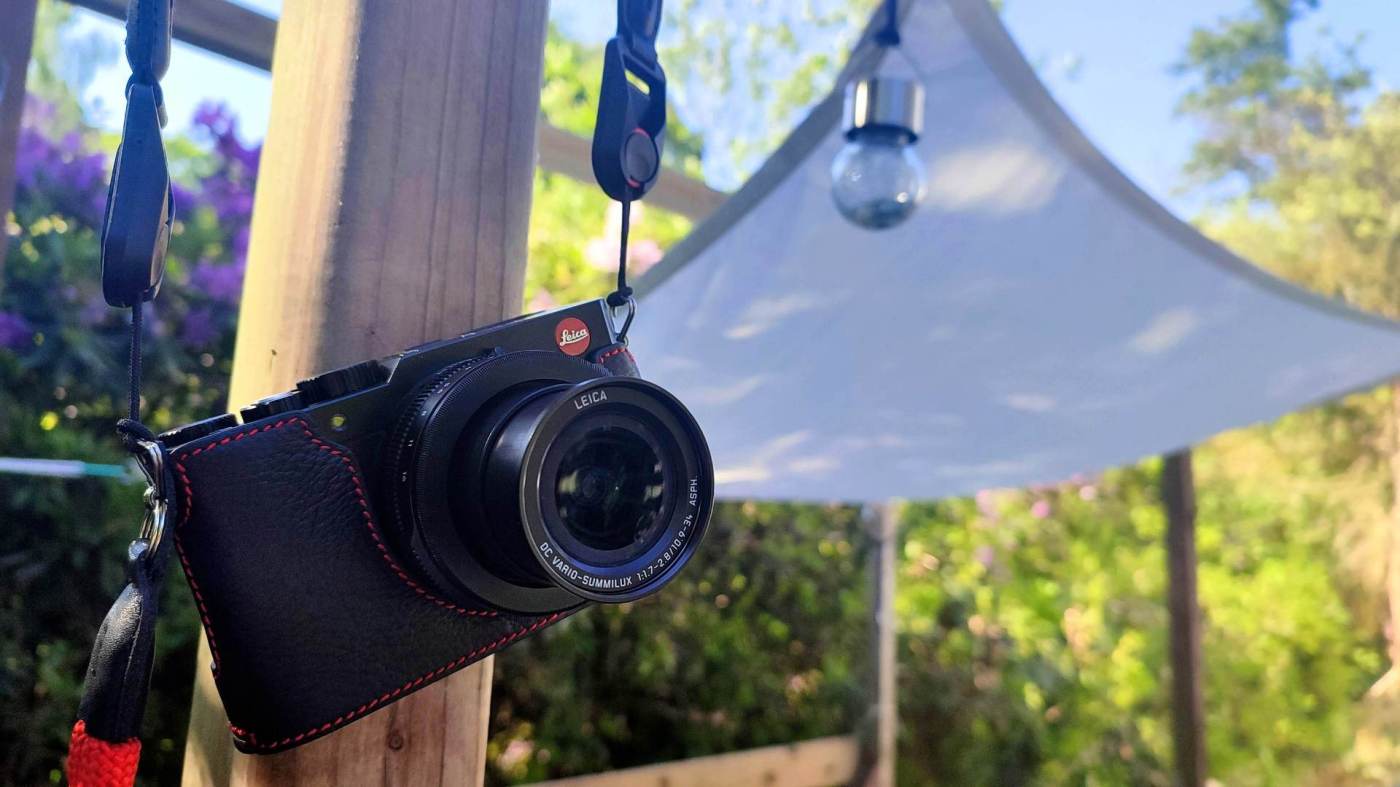9 minutes read time
Six Months with the Leica D-Lux (Typ 109) – A Compact Classic Still Worth It?
After six months of steady use, the Leica D-Lux Type 109 has proven itself as a compact powerhouse that deserves more credit than it often gets. Despite being an older model with a humble 12MP sensor, this camera still holds its own—especially in the hands of someone who values practical tools over spec-chasing hype.
A Second Camera That (almost) Became My First
Originally picked up as a second body next to my Olympus, OM System or Leica T (Typ 107), the D-Lux 109 has quietly become my go-to choice for daily shooting. I’d say it splits usage time almost 50/50 together with any other camera, and it often comes along when I don’t feel like choosing—when I just want a good, reliable camera with serious capabilities in a small body. It’s the kind of camera that makes no demands, asks for no excuses, and just works.
I’ve owned a Fuji X100, and I get why so many photographers buy an X100 or a Ricoh GR with the dream of using it as their one-and-only. But if I had to make that choice today? No hesitation—I’d go with the Leica D-Lux 109. It may be my “second” camera on paper, but it ticks so many boxes, it almost stole the top spot !
Ergonomics and Controls – Everything in the Right Place
This little Leica fits like a glove. It’s small enough to bring anywhere but substantial enough to feel like a “real” camera. The manual controls are a joy—think Fuji X100 style but with a zoom lens and, dare I say, even better handling. Aperture ring, shutter dial, proper EVF… it’s got everything I want in a travel or everyday camera.


Image Quality – Plenty Good at 12MP
Sure, the sensor is “only” 12 megapixels. But unless you’re printing billboards or cropping like mad, that’s more than enough. The JPEGs are genuinely stunning—crisp, detailed, and ready to impress straight out of camera., and the RAW files also process beautifully. I often use Adobe’s DNG profiles (from the D-Lux 7, actually), and they give me all the tonal flexibility I need for different moods and looks.
That Leica-Labeled Lens
The lens is a beauty: fast, sharp, and versatile. No complaints. It’s an f/1.7–2.8 zoom that covers a very useful 24–75mm equivalent range, which makes it more adaptable than most fixed-lens cameras in this size class. Unlike the Fuji X100 series, which locks you into one focal length, the D-Lux lets you adapt to the scene without sacrificing quality.
Autofocus and Performance
Autofocus is snappy—way faster than my old Fuji X100—and I’ve experienced zero issues shooting RAW+JPEG. No noticeable lag, no hiccups. I haven’t used burst mode (yet), but single-shot performance is excellent. The little built-in EVF is surprisingly good, and I use it almost exclusively.
Workflow – A Perfect Fit with RawTherapee
I process the RAWs in RawTherapee using converted DNGs. I’ve adopted the Adobe D-Lux 7 camera profiles, and they work flawlessly. Occasionally, I’ll apply a LUT for a special look—say a fake infrared or a cinematic grade—but most of the time, the Adobe profiles are all I need.
Battery Life and Reliability
Battery life is good enough for almost a day of moderate shooting. Build-wise, the D-Lux 109 is rock solid. Mine was already second-hand when I got it, and after half a year of regular use, it still looks and feels like new.
I recently decided to upgrade the battery setup for my D-Lux 109. Why? Well, there are days when this camera ends up doing everything—sometimes it’s even the only one I bring. That makes squeezing an entire day out of a single battery… tricky. And with multi-day trips on the horizon, a second—or even third—battery quickly becomes essential.
I picked up a kit from Cellonic: two extra batteries of 730mA and a USB charger, all for a jaw-dropping €35. Compare that to nearly €100 for one original Leica battery… I didn’t have to think twice.
Any Downsides?
Honestly? I wish I could say “no.” But-like with many compact cameras that use a collapsible zoom lens—there is one potential issue. I’ve encountered it before on a Samsung WB850 (remember those?). The Leica D-Lux Type 109 suffers from the same vulnerability.
Here’s the deal: the lens extends quite a bit when powering on and retracts just as dramatically when you turn the camera off. That movement creates a mild vacuum effect-pulling in dust particles from the air or from the lens barrel itself. If there were already some particles present (say, from a previous owner), they’ll eventually find their way deeper inside. And here’s the real kicker: since the lens is fixed, you can’t easily clean it yourself.
That said, I’ve found two potential workarounds that might just help:
Tip 1 – The “gentle drop” trick (via ChatGPT):
Turn the camera off, and softly let it fall (from about 2 cm high) onto a fleece blanket or a thick layer of bubble wrap. The tiny shock might dislodge the dust from the sensor or internal optics. Surprisingly, this works in some cases. I’ve tested this one—low risk, and worth a shot.
Tip 2 – The vacuum chamber hack (untested… yet):
Take a plastic bottle (0.5–1L), cut off the bottom, and fit the open part snugly over the lens barrel. Seal the connection airtight with electrical tape (watch out for sticky residue). Extend the lens to about 75mm. Then, tape the other end of the bottle to the hose of a vacuum cleaner. Turn it on for 2–3 minutes. In theory, the suction should pull out any internal dust particles. Again, I haven’t tested this one yet—but it sounds like an engineer’s fever dream, so naturally, I’ll try it soon.
Is this a dealbreaker? Not really—but it’s a quirk worth knowing. And if I had to nitpick further, some might consider the 12MP sensor a bit underwhelming in 2025. If that bothers you, there’s always the newer (and pricier) D-Lux 8.
Personally, quirks and all, I still believe the Type 109 earns its place in any photographer’s toolkit. Compact, sharp, classic, and—when treated right—reliable enough for years of joy.
The X-Factor
What makes the D-Lux special is how it feels. The shutter dial, the compact build, the manual controls—these things inspire you to shoot. It reminds me of a mini Leica Q, both in form and function. And unlike many modern cameras, it doesn’t get in your way.
Compared to The Fuji X100
Some may remember I once owned the original Fujifilm X100. I was among the early adopters who jumped aboard the then-exciting X100 project. As thrilled as I was to receive it, my excitement quickly faded. The performance was… underwhelming. To be fair, many of its quirks were later fixed through firmware updates. But still—what really bothered me was the fixed lens. Yes, I know, a prime is supposed to be “better,” but not having even a small zoom made the camera far less versatile for my kind of photography.
Looking back, I can honestly say: I would’ve preferred a Leica D-Lux Typ 109 over the original X100. And truthfully, the same goes for the X100S, X100T, and even the much-loved X100F.
If you’re looking for compactness, speed, zoom flexibility, and overall usability in a second-hand camera, the Leica D-Lux Typ 109 is hard to beat—even against the Fuji legends.
Compared to The Lumix LX100
Right, let me just get this out of the way, because I know this is going to raise a few eyebrows. Especially now that Emily Lowrey from Micro Four Nerds just released a video on this little camera—well, on the Lumix LX100 version of it.
Yes, the Lumix is about 80-85% the same camera. And yes, you might—might—find it for a bit less cash. I say might, because that’s not always the case. Now, keep that 85% in mind. The two aren’t entirely identical. There are differences – and Emily, I think you missed a key one:

The Panasonic LX100 is made in China.
The Leica D-Lux Typ 109? It rolls off Japanese production lines – Just like the higher-end, more premium Lumix cameras. Why the difference? Simple—Leica demands tighter quality control. So if you’re given the choice: China or Japan,
Which would you pick?
Besides that, while the sensor and lens are identical, Leica uses its own firmware and JPEG engine. The result? Different color tones, contrast, and white balance—more “Leica” in feel. Menus are also cleaner and more minimal, with fewer extra features than on the LX100. Less clutter, more character.
The Leica is a bit sleeker—some would say prettier. Others, more cynical types, might call it “slippery.” But let’s be honest, it’s a sexier camera. So really, the question is:
Do you want the Sexier Leica with that signature Leica JPEG rendering and made in Japan?
Or would you rather save a bit and go for the Lumix? Totally up to you. That’s all I’m going to say.
Final Verdict
Unless a D-Lux 7 or 8 falls out of the sky wrapped in a 50% discount sticker, I see no reason to “upgrade.” The Typ 109 delivers. It’s solid, responsive, and consistently enjoyable to shoot with. It has officially claimed the title of my everyday, always-with-me camera—a role even my Leica T struggles to fill, simply because of its larger footprint.
And what about my Olympus TG-5, you ask? Still one of my favourite tiny cameras. But let’s not kid ourselves—the output can’t hold a candle to what the Leica 109 delivers. This isn’t about specs; it’s about the experience. The images. The feeling.
In the end, it’s all about balance:
How small are you willing to go before image quality starts to suffer?
Or, put differently: is ruggedness and pocketability a must in your situation? Because here’s the thing—taking the TG-5 means carrying a tough little camera.
Taking the Leica 109? That’s bringing along joy, creative spark, and image quality that inspires.
One’s a tool. The other’s a love affair.
Links
Leica D Lux 8 – https://leica-camera.com/en-int/photography/cameras/d-lux/d-lux-8?srsltid=AfmBOopOIzBGJKMYip_v51GGJk_YDvT1jFEDd4c4sEBlfRRbX8Kb5Qig
This article was written by Marc R.
While I primarily speak Dutch and have some knowledge of English and a little French, ChatGPT helps ensure my writing is grammatically correct. I often mix Dutch and English in my drafts, and ChatGPT steps in to translate and correct.
I don’t have any Sponsoring Companies, Patreon support, or Follower Donations.
I don’t drink Coffee, well, I do … but not the financial form you sometimes find on other websites, like ‘buy me a coffee’ 😊
However, what I truly need to keep going is Motivation, and the best part is, it won’t cost you a thing. You can offer it for free – just hit the Like button and Subscribe !
Discover more from Open Source Photography
Subscribe to get the latest posts sent to your email.




Excellent read … Loved the compressing to The Lumix LX100 very nice I wish the queen from Micro Four Nerds reads it. 🙂 Yes, hello Emily 🙂
LikeLiked by 1 person
Thanks Sergei. I do enjoy her YouTube videos, but honestly—I just wish more of these “photographer influencers” would give it to us straight. No sugarcoating, no soft edges. Sure, you can be a fan of a brand—but that doesn’t automatically make it better than a competing model from someone else.
LikeLiked by 1 person
Absolutely …!
LikeLiked by 1 person
As you know, I almost picked up the Lumix version of this camera not so long ago. It is a lovely camera, and I’ve been enjoying your photos from it.
That problem with dust getting into the camera affected an old Canon Ixus camera I had. I’m the end, after trying everything (and before the internet was a thing like it is now), I had to send it off to Canon. All my photos from a visit to San Francisco had a couple of very noticeable spots in every photograph!
Thanks for the wrap-up Marc, great as always.
LikeLiked by 1 person
All of these cameras—regardless of sensor size—are pretty amazing little machines. But honestly, if manufacturers had paid just a bit more attention to this brand-wide issue (say, by including some kind of sensor cleaning system), they’d be even more appealing. Getting them cleaned professionally every time? Not exactly budget-friendly.
Thanks so much for your input, Mark—always appreciated!
– Marc
LikeLiked by 1 person
Goed artikel! In ben nu geïnteresseerd in dit cameraatje.
LikeLiked by 1 person
Dankjewel Peter, het is geschreven zonder vooroordelen en sponsering, en dus zo eerlijk mogelijk. Fijn dat je er iets aan gehad hebt. Marc.
LikeLiked by 1 person